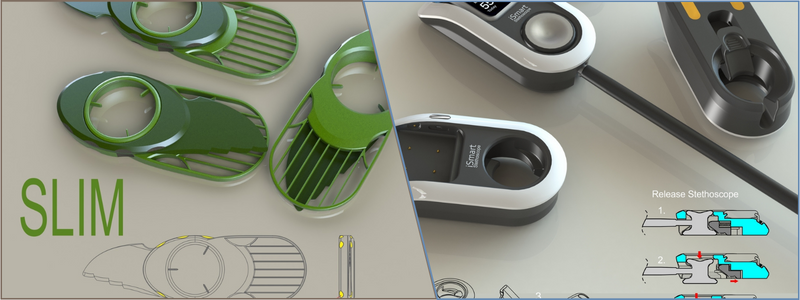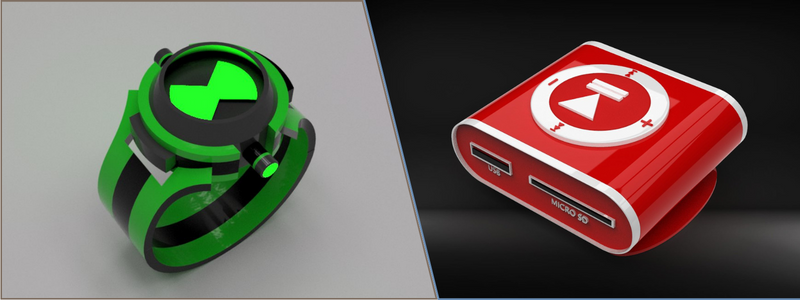In today’s post, you will learn about the five fascinating things inventors need to know when taking products to the market. After watching all those movies about inventors, it is easy to imagine how exciting their lives can be. They spend leisurely days in their labs, tinkering away until that wonderful “Eureka” moment leads to a luxurious future.
Sadly, an inventor’s life isn’t as colorful and easy as it seems. The harsh truth is that an inventor’s journey can be pretty arduous and challenging. An inventor will overcome bumpy roads, pitfalls, and obstacles before they can finally bring their product idea to life. To ensure a successful product launch, here are five things that any bona fide inventor should know first.
 Table of Contents
Table of Contents
RELATED: How-to guide: new product design, engineering, and prototyping your Idea for mass manufacturing
5 Fascinating things inventors need to know: taking products to the market
1. Establish a unique idea
The fuzzy Front End or FFE is the first stage of the product development process. It is that period when product concept design services are required, and ideas are implemented before the actual development of a product. It often begins with identifying a need that the current marketplace can’t meet or satisfy.
To fill this need, you start with brainstorming. FFE has five specific areas:
- Identify the opportunity for a new product
- Analyze the opportunity
- Establish the Idea
- Select the Idea through brainstorming
- Develop the Idea
RELATED: What is design thinking, and why is it essential for new product design?
After brainstorming, it is now time to determine your target market. It can be as specific or broad as necessary. However, a more specific target market will also be smaller, which means lower profits. Don’t forget to consider all demographics at this stage. If the 3D product demo services showcase your new toy design for little girls, entertain the kids themselves and the parents who will buy the toy. Are there existing similar products on the market? While it is impossible to come up with a unique idea, it doesn’t mean your Idea wouldn’t have anything new to offer.
If there are also existing products similar to yours, what is different about your product that would make consumers choose to buy it over other options? Make sure it is feasible to produce your new 3D product modeling service design, given your current technological limitations and abilities. It would be useless to waste your money and time trying to develop a product if you can’t make it work. Lastly, confirm your product’s potential to be profitable. It will come from knowing the production costs and determining if sufficient demand exists. You have to ensure that your new product isn’t too specific with an existing consumer base who will be interested in buying it.
RELATED: Guide to new product design and development: bring your concept prototype to market
2. Formalizing the concept
Now that you have figured out your million-dollar product idea, you should formalize your concept and determine how you plan to turn it into a reality. With the help of the earlier brainstorming, you should already have a good idea about your product and its intended purpose. It is the time when you should develop a mockup to showcase your ideas to other people for feedback. You can use a brochure that shows an example of your product, complete with a detailed explanation and what it can do. You can also create a presentation on your laptop or, better yet, develop a website that you can share with others.

A 3D animation service can help you present your new Idea in clear and definite terms; it will give you something you can show others to attract potential investors early on. Product development can involve high upfront costs, and investors can help you offset these costs. This mockup can also come in handy for market research to learn your product’s potential profitability. Presenting this mockup to others can also help you determine if there is demand for your product in the first place. It is a piece of information that inventors would be interested to know. You can talk to an accountant and market experts to learn more about the potential ROI or return on investment.
RELATED: 10 Tips for good product design
3. Develop a prototype
Developing a product prototype is the next step. You might have already completed this if you have a handmade product that you create yourself. Determining how you plan to scale the production to meet the demand would be best, directly affecting profitability. If your new product is only to generate an extra income on the side, hand-making every piece might be absurd. However, if your ultimate goal is to establish a presence in the marketplace, trying to hand-make each one won’t be feasible in the long run. Even if you have no plans to make every product yourself, using rapid prototyping services to develop the first one yourself is another viable option.
If you cannot make the product yourself, your next best option is establishing a partnership with a reliable manufacturer. You can check online to find a company that can produce your product prototype. Most of these companies are often located outside the United States, so you have to decide if you want to work with a local or an overseas manufacturer. While overseas companies may have lower costs, remember that it will be logistically challenging to visit the factory for a first-hand observation if you live a thousand miles away. If you need to see and check the factory in person, you must look for the closest factory in your area. Take note that most consumers prefer US-made products.
RELATED: 10 Tips when hiring a prototype design firm for new product design
If it is a factor that matters to you, try narrowing your search only to factories located in the US. One more option is to license your product idea to a reputable company. With this option, you will let the company use your product idea, and the company will then pay you royalties for every product sold. Most inventors find it more straightforward since the process is more hands-off. Your chosen company will handle the entire production process, distribution, and marketing, and all you have to do is take a cut of the sales. Make sure you understand copyright law before doing anything else.
While this model means lower profits for you, this is a less stressful method for taking your product to the market. If you plan to license your product, ensure you are the legal owner of every aspect of your new Idea. It includes trademarking the product name and the phrases associated with it. You also need to patent your Idea if possible.
RELATED: 5 Tips to turn your Idea into a new product design with prototype CAD services
4. Obtain a patent
If you are confident that you have a unique and new product, you can get a patent to protect your intellectual property. If this field is unfamiliar to you, consider designing patent services that are familiar with the process and have the relevant expertise and experience. Research patents to confirm if you have a qualified idea. For a patent to be granted, the US Patent Office will determine that you have a new, non-obvious, and original Idea. Since all patents are available to the public, a good first step here is to search existing patents. However, don’t just limit the search to patents alone. If there are similar products anywhere, even those without patents, you may be unable to get a patent yourself.
RELATED: How to protect your new invention idea

5. Test, Refine, and improve your product
Say you have now developed a prototype using a freelance gadget design service, forged relationships with investors and manufacturers, trademarked the name of your product, and maybe even acquired a patent. It would be best if you started getting feedback to confirm that your product is as good as it can be. Your family and friends can be a reliable initial resource, although, given your relationship, they might not be able to give the most honest and unbiased feedback.
Focus groups consist of strangers who are not connected to you in any way or don’t have any preconceived ideas about the product and can provide usable and honest feedback. Many marketing companies specializing in focus groups can help you acquire this valuable information. If your new product is an app or software, performing a beta test run can help you get feedback from real users and identify existing bugs in your new product.
RELATED: 7 Tips for effective product development & design
A beta test is a limited product launch where a limited number of users spend time using the software and give feedback regarding its performance. Every software undergoes a beta test phase that provides invaluable information. Feedback from actual potential customers can give you the necessary information to improve and refine your product. It may also mean developing a new prototype that incorporates any changes made. You might need to go through the process a few times depending on your feedback.
Of course, it may add to your upfront costs. However, since you have already spent money, time, and hard work on your dream, it just makes sense that you want to be entirely sure that your new product is as good as it can be before you take it to the market.
How Cad Crowd can assist
Do you need design help to bring your new product to life? Cad Crowd can assist – contact us for a free design quote on your project.
